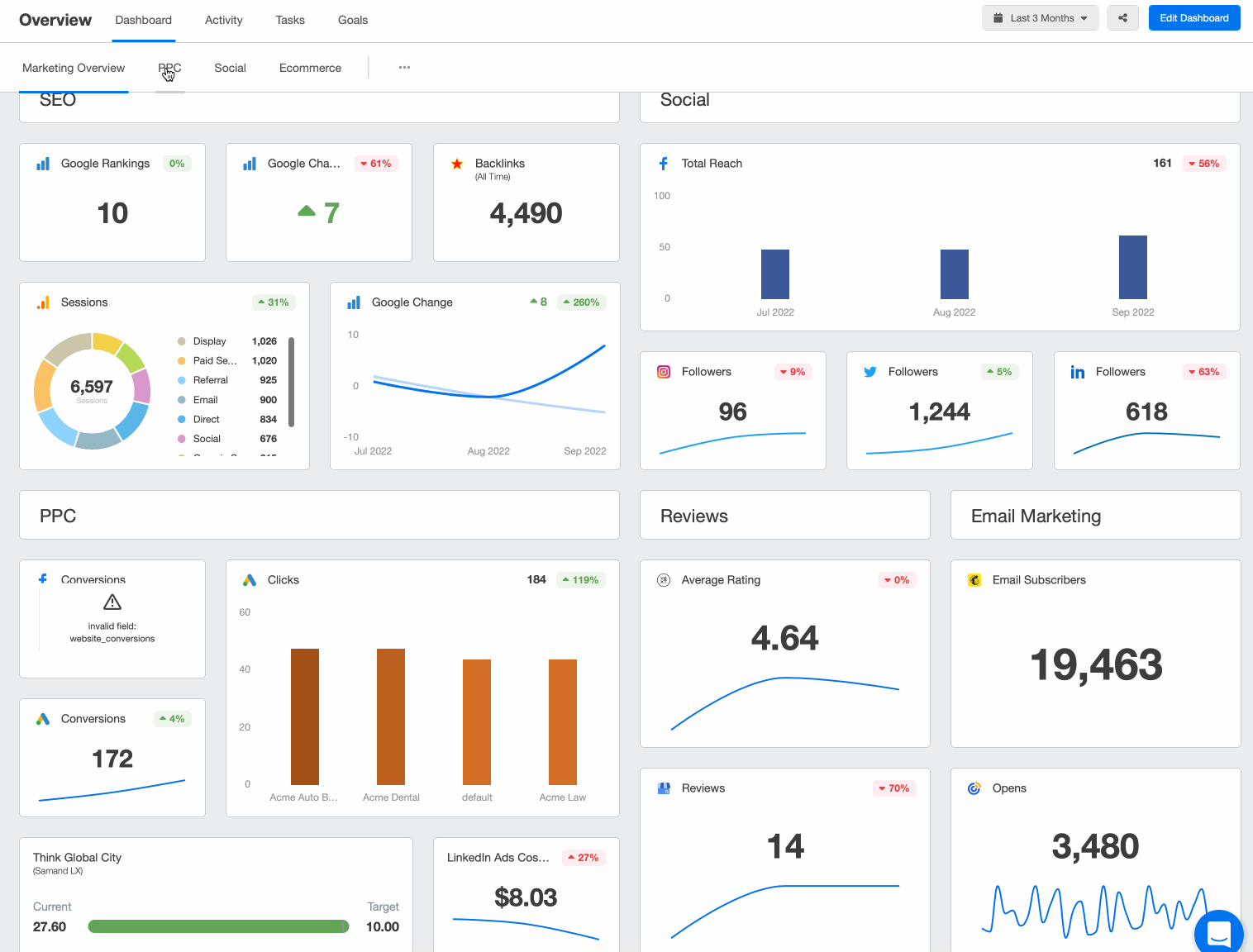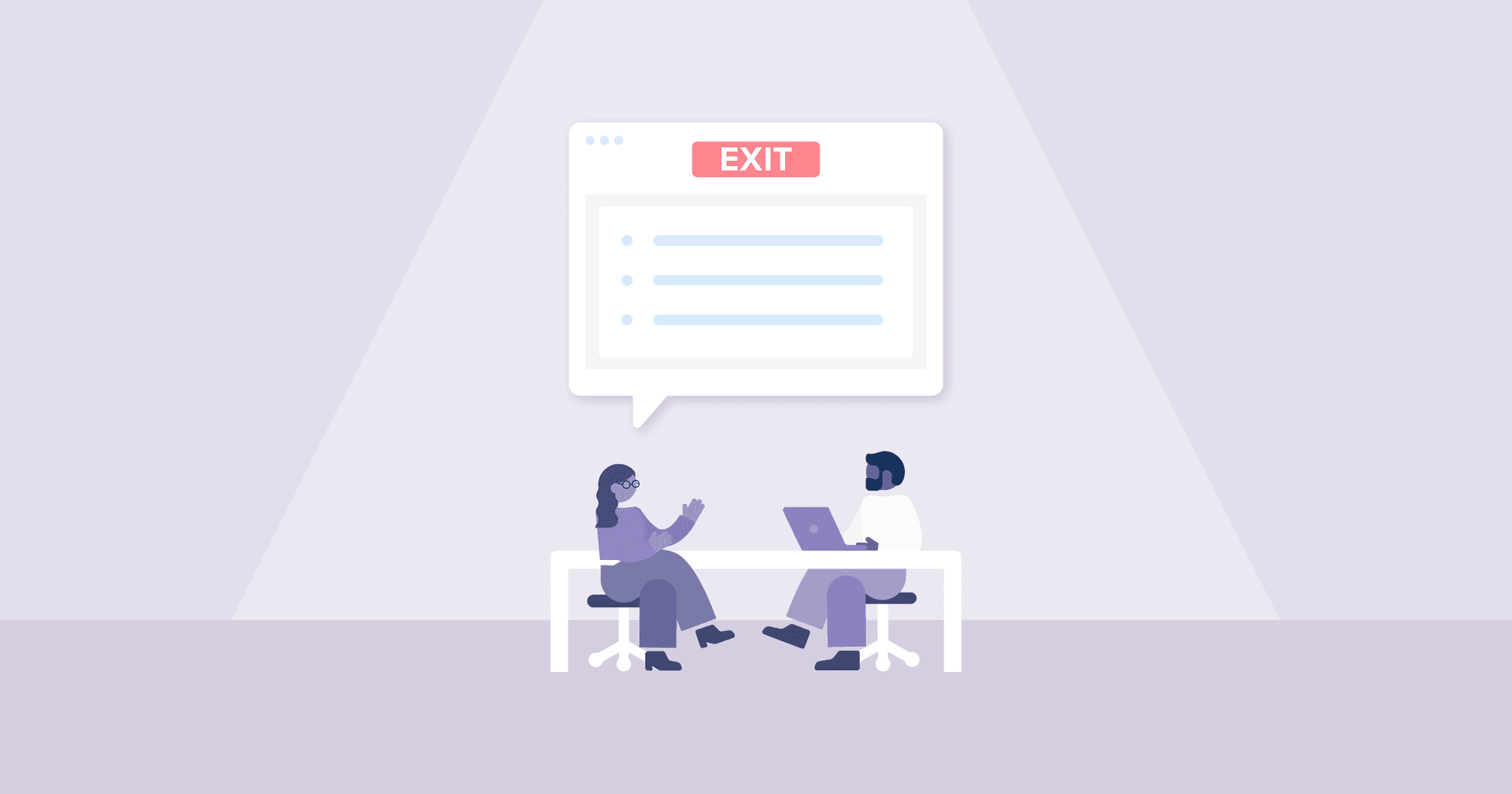Table of Contents
QUICK SUMMARY: As your agency grows, an employee’s role may evolve or change altogether. In some instances, it means an employee is no longer a good fit. While it’s a difficult situation to navigate, it must be addressed to ensure business continuity and client satisfaction. In this article, AgencyAnalytics’ Chief People Officer Lyse Cornelius-Biggs explores the most common reasons for this outgrowth, alternatives to termination, and best practices when letting an employee go.
Change brings growth, and sometimes, it’s uncomfortable.
As an agency scales, priorities will shift, and processes will be revised. While the goal is for employees to grow with your business, it’s not always possible following a period of intense growth or change. In fact, sometimes, an employee’s core competencies no longer align with where your agency is headed.
It’s a complicated place to be–especially if the employee in question has been with your agency since the beginning and is a beloved member of the team.
So what’s an agency leader to do?
The good news is that there are many options to remedy this challenge (that don’t include termination). In this article, I’ll share the key signs of employee misalignment based on my observations as a people leader, as well as a pre-planned strategy to maintain transparency, preserve team morale, and keep your agency on the right track.
Let’s get started.
3 Signs Your Agency Has Outgrown an Employee (With Non-Termination Solutions)
Noticing that a team member has fallen out of alignment with the agency is just the first step.
Remember: It’s quite possible that this team member has previously made significant contributions to the agency. They can very well return to that place of high engagement and adding value–provided that the situation is handled with care.
Let’s explore three of the telltale signs an employee may no longer be a good fit for your business and how to (hopefully) bring them back on track.
Sign #1: Misalignment Between the Employee’s Role and Your Agency’s Direction
There’s an often overlooked relationship between employee roles and your ideal customer profile (ICP).
To contextualize this further, let’s say your agency started off serving small and medium businesses. It’s a comfortable place, but you’re determined to move further along the agency life cycle.
A few client projects later, you’ve uncovered a market sweet spot in a specialized, lucrative niche. There’s an opportunity to grow your brand presence, acquire enterprise-level accounts, and take your agency to the next level.
As a result, your ICP has now evolved, which has a trickle effect. It requires an overhaul of existing services and taking a hard look at your existing agency structure–all in the name of growth. Key questions will pop up, like:
What are the needs of this new or updated client base?
What specific roles or job functions are most affected by this shift in ICP?
Are there competency gaps in our team that impact our ability to serve this ICP?
Should we consider retraining or upskilling current employees to meet new demands?
Sometimes, the answers to these questions lead to uncomfortable considerations. For instance, picture your Lead Account Manager. While they’ve built great relationships with your legacy small business clients, they may not be the best person to handle larger, complex accounts. It’s not that they’re not capable. They might prefer not to.
Growth is a personal journey, after all. Employees may sometimes have aspirations that don’t align with your agency’s (and that’s okay, too).
Possible Fix: Consider a Role Adjustment or Reassignment
A role adjustment or reassignment really boils down to your agency’s needs.
Following up on the above scenario, let’s say you’ve decided to retain long-standing SMB clients (even though your ICP has significantly changed). In this scenario, it may make sense to create a separate division for SMBs and retool this individual’s role to lead this new department instead of client services on its own.
Alternatively, say this employee has room to grow before shifting to a higher role in the agency. Instead of changing their job altogether, tweak the responsibilities to present them with opportunities to learn and expand their skill set.
This may involve connecting them with a senior executive who has greater experience in the new target niche and creating opportunities to shadow them during key client meetings. Alternatively, your agency might offer some education options for additional certifications. This would still allow them to contribute to your agency’s success while remaining in a role that they excel in (and enjoy).
Sign #2: The Employee Hasn’t Acquired New Skills
If employees aren’t sharpening their skills, they risk being left behind as the agency scales.
Take the evolution of AI, for example. ChatGPT was first introduced in 2022 and has become a staple in many marketing-related activities. While it’s an evolving development, agencies have had to adjust their process, keep a keen eye on the updates, and ensure client projects continue to run smoothly.
AI isn't going away, and it’s moving quickly. Therefore, putting our heads in the sand won't help. As an agency, we need to consider how to use these new tools effectively and create a competitive advantage.
Tim Akers, Founder, Akers Digital
Think of your in-house copywriter. In the space of two years, they’ve been tasked with learning what AI tools are, working to understand how to properly leverage them while avoiding the pitfalls, and keeping an ear to the ground as best practices emerged.
Given more recent updates (like the emergence of Generative AI for search), there’s virtually no choice but to adapt. Otherwise, they’ll fall behind and lose an opportunity to develop a competitive advantage.
While some core functions remain the same, an employee’s responsibilities aren’t cemented from the time they are onboarded. Instead, jobs require versatility, further training, and upskilling–especially in an industry like marketing.
Without this willingness, these employees will fall behind in their roles and wind up with outdated competencies.
Possible Solution: Offer Training, Mentorship, or Other Resources
Employees learn through experience, exposure and education.
If there’s already a senior employee who has developed a knack for using AI, great! Once they’re on board, it’s an opportunity for them to provide direct guidance and mentoring.
Having your Copywriter shadow this experienced employee also goes beyond reading a doc or watching a couple of videos. Instead, it’s an immersive learning experience that lets them observe, ask questions, and get up to speed.
Also, it may be a good idea to ask your senior employee to create an SOP or spearhead internal training for other team members. It doesn’t have to be complicated, either. It could be as simple as an internal “Lunch and Learn” session. If supplemental training is needed, there’s no shortage of online courses or certifications.
To understand whether your Copywriter is making progress, create a time-based development plan to help close the skill gap. Define clear learning outcomes and milestones so both you and your employee know what success looks like. In this scenario, it may be something like “Use Chat GPT to create ten blog post outlines by the end of the month.”
Impress clients and save hours with custom, automated reporting.
Join 7,000+ agencies that create reports in minutes instead of hours using AgencyAnalytics. Get started for free. No credit card required.
Sign #3: The Employee Has Steadily Declining Performance
An occasional error is one thing. Employees are only human, after all. However, a pattern of missing targets is cause for concern and may indicate outgrowth.
Let’s say your Senior Graphic Designer previously had a track record of delivering 98% of their deliverables on time. However, there have been some notable and worrying developments over the past quarter.
Now, they’re behind on most projects, and clients request more revisions than usual. It’s affecting your output. Plus, your agency's reputation is on the line–something has to be done sooner rather than later.
It’s time to speak candidly with your Senior Graphic Designer about their performance. To do this well, be sure to present tangible evidence instead of just saying, “I feel like you haven’t been delivering as well as before.”
In other words, it’s difficult to have a conversation about declining performance if you haven’t articulated clear expectations from the outset.
Without a clear objective, it becomes nearly impossible to measure progress. Regardless of mission or vision, there is no way to be held accountable.
Daniel Patton, CEO, Rothbright
Instead of creating obscure or overly complex goals:
Define What an Employee Is Responsible for in Tangible, Specific Terms. It can be as simple as “Achieve 100 cold calls per month.”
Outline Any Required Knowledge and Behavior-Based Expectations. For example, a Client Account Manager needs to have tight project management skills and deliver top-notch customer service.
Before Signing off on These Targets, Ask Your Employee To Explain Their Understanding. This approach ensures that everyone is on the same page.
Decide on an Appropriate Time To Have a Formal Performance Review. Use this forum to determine whether an employee was successful at meeting these targets.
Possible Fix: Address Performance Issues at 1:1 Check-Ins
Aside from formal performance reviews, I recommend a more iterative approach.
In fact, in my opinion, the biggest mistake managers make is waiting until the performance review rolls around to point out a significant role-related issue. Then, when assessment cycles come around, the employee feels blindsided and even resentful to learn their job is on the line.
Remember–the results of a performance review should never come as a surprise, especially when so much is at stake.
To avoid surprises, have regularly scheduled 1:1 meetings. These check-ins allow employees to share roadblocks, make course corrections, and incrementally improve performance. Also, if you notice an employee is struggling with a particular deliverable, address it directly and provide a solution.
Instead of a confrontational question like, “Why are you off track with this target?” provide useful advice, taking their feedback into account. Consider the following:
“Hey, Jane! I know this client has a goal of generating 1000 leads this quarter. How are their PPC campaigns coming along? Is something getting in your way since our last meeting? Let’s talk about it.”
This approach references a specific goal, demonstrates empathy, and shows that you’re willing to lend support.

One of the best ways to provide clear expectations to agency employees is with a system that monitors the progress of client deliverables in real time. Access 80+ integrations in one place–explore AgencyAnalytics today; it’s free for 14 days.
After listening to the employee’s feedback, consider making a suggestion and setting a time frame to assess the outcome (like the example below).
"Since we're currently tracking at X to the goal, what are some ways you think this can be accelerated? What have you tried this far? What else might be possible?"
Brainstorming solutions with the employee instead of jumping straight to a recommendation helps build buy-in. Of course, if this is a task that the employee isn't familiar with, you can be more directive with the recommendation, providing context as to why this course of action was selected.
This solution-driven approach is a win-win for both parties. It gives the employee an opportunity to step up and alleviate the situation before a formal review comes around. Additionally, it demonstrates your dedication to their professional growth.
If these iterative interventions still don’t result in better performance, then it may indicate employee misalignment.
A Note on Personal Challenges
Here’s another thing: A decline in performance isn’t always a matter of skills–consider the impact of personal challenges. From job burnout to going through a messy divorce, you’ll never truly know what an employee is dealing with… until you ask (tactfully, of course).
Your 1:1 meetings are also an opportunity to develop a rapport. Learn a bit more about your employee–ask about their family, partner, dog, or even hobbies. That way, it becomes easier for them to disclose an extenuating circumstance that’s contributing to a performance decline.
In these situations, it’s your job as a leader to create enough space and understanding. This looks like reassigning client deliverables, adjusting internal deadlines, or allowing an extended leave of absence. Some situations may require professional intervention, which is where EAP programs or mental health benefits come in.
To sum it up, assess these situations on a case-by-case basis. Allow employees enough time to deal with a fork in the road before returning to business as usual.
What To Do When It’s Time To Let an Employee Go
Even after exploring the above actions, sometimes there’s no other option than parting ways with an employee. It’s certainly not an easy decision to make. However, it’s necessary when it just isn’t working out.
If this is the case for you, here are some practices to ensure it goes smoothly.
Approach the Situation With Empathy
Whether an employee is let go due to performance issues or restructuring, always treat them with dignity and respect. At the end of the day, it’s another human being on the other side of that conversation. Here’s how to approach it:
Have a Face-To-Face Meeting (Or a Video Call if You’re a Remote Agency). Be clear that it’s strictly a business decision and give the employee a chance to absorb the news.
During the Conversation, Maintain a Neutral and Respectful Tone. Even if emotions run high, keep your composure and stick to your decision.
Following This Interaction, Share a Formal Termination Letter. Provide a point of contact—not to negotiate their role back, but to clarify any implications or get further context.
Ensure This Meeting Is Conducted in a Private Setting. It provides a space to share this difficult news without prying eyes or ears.
If Appropriate, Share Services To Help the Employee Find a New Role. This includes career counselling, resume writing assistance, and job search support.
Be Aware of Legal and Ethical Considerations
If conducted incorrectly, an employee termination process could come with serious legal consequences.
To avoid any mishaps or a compromised reputation, review the following beforehand.
Category | Details |
|---|---|
Employment Contracts and Other Agreements | Adhere to any notice periods specified in your employee’s contract. Review non-compete clauses that prevent the employee from joining direct competitors immediately. Ensure they continue to uphold confidentiality agreements post-departure. |
Severance and Payout Requirements | Follow the severance terms specified in the employment contract. Pay out any accrued vacation days, bonuses, or other benefits. |
Issue of Final Paycheck | Ensure the final paycheck includes salary remittances, overtime, and other compensations. Determine the legal timeframe for providing these payments, which may vary by state. |
Continuation or Halt of Benefits | Inform the employee about the continuation of any benefits. For example, their health insurance plan with your agency may allow coverage for a certain time. Conversely, share any benefit cut-off dates where applicable. |
Have a Plan To Inform Employees and Clients
Don’t let the news of an employee's departure travel through the grapevine–instead, address your team and clients upfront. This proactive communication ensures that everyone is informed and prepared for any subsequent transitions.
Instead of delving into details like “They weren’t performing well”, keep it high-level. Simply say something like, “We had to make a difficult decision to end this person’s employment because of our internal restructuring exercise.” It’s about providing enough context while respecting the departing employee’s privacy.
When conversing with clients, share any changes to work arrangements. This includes:
A New Point of Contact. Introduce the new person who will be handling their account or project. For instance, "Moving forward, John Doe will be your main point of contact for all matters related to your project. John brings a wealth of experience and is looking forward to working with you."
A Transition Plan. Explain how the transition will be managed to ensure continuity. You might say something like, "We have put in place a comprehensive transition plan to ensure that all your needs continue to be met seamlessly. John and the rest of the team are fully briefed on your account."
An Assurance of Service Quality. Reassure clients that the quality of service will remain high. For example, "Please be assured that this change will not affect the level of service you receive. We are committed to maintaining the same high standards you expect from us."
Your Availability for Questions. Offer to address any concerns or questions. A line like, "If you have any questions or need further clarification about this change, please do not hesitate to reach out to us directly," is effective.
By approaching the situation with sensitivity and professionalism, you’ll ensure a seamless transition. In turn, this will maintain trust and continuity in your agency-client relationships.
Address Employee Misalignment To Keep Your Agency’s Momentum Going
When an employee outgrows your agency, it feels uncomfortable. Instead of avoiding the issue, it’s best to address the elephant in the room in a strategic, tactful way.
Before jumping straight to the termination process, explore the scenarios I’ve shared–there may be a bigger picture to consider. To sum it up:
Employee Roles Should Be Primarily Based on Client Needs. Frequently review your ICP, service offerings, and resources. Then, use this as a basis to determine whether there’s role outgrowth.
Establish Clearly Defined Ways To Assess Performance. Set realistic targets upfront, have iterative check-ins, and give employees enough time to course correct.
Consider the Impact of Personal Challenges. Give employees enough time to deal with extenuating circumstances before they return to full capacity.
Foster a Culture of Continuous Learning. Offer training, assign mentors, and provide additional resources where needed. If employees are willing and able, help them upskill as needed.
By following these steps, you’ll ensure a thoughtful and comprehensive approach to fostering professional growth amongst your teams–and making the hard decisions where necessary.
Streamline your operations, track client metrics, and monitor campaign progress. Invest in a system that complements your growth–try AgencyAnalytics today, free for 14 days.

Written by
Lyse is a high-impact People and Culture Leader with over 20+ years spanning the Financial Services, Retail and Tech sectors. She is a Certified Coach and Change Management Practitioner with a proven track record of building ground-up people strategies for high-growth companies. Lyse leads the People Team at AgencyAnalytics to deliver a seamless employee and candidate experience enabling our ambitious growth.
See how 7,000+ marketing agencies help clients win
Free 14-day trial. No credit card required.






